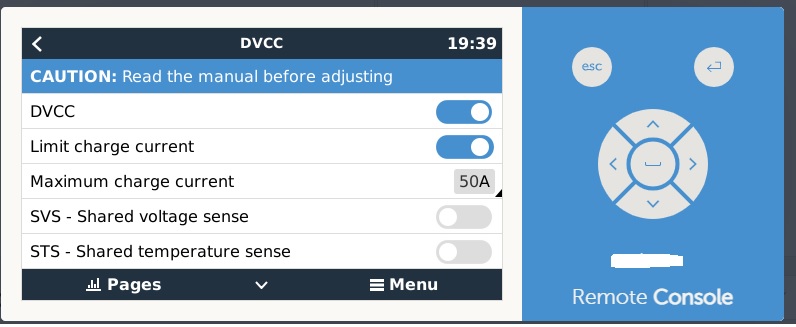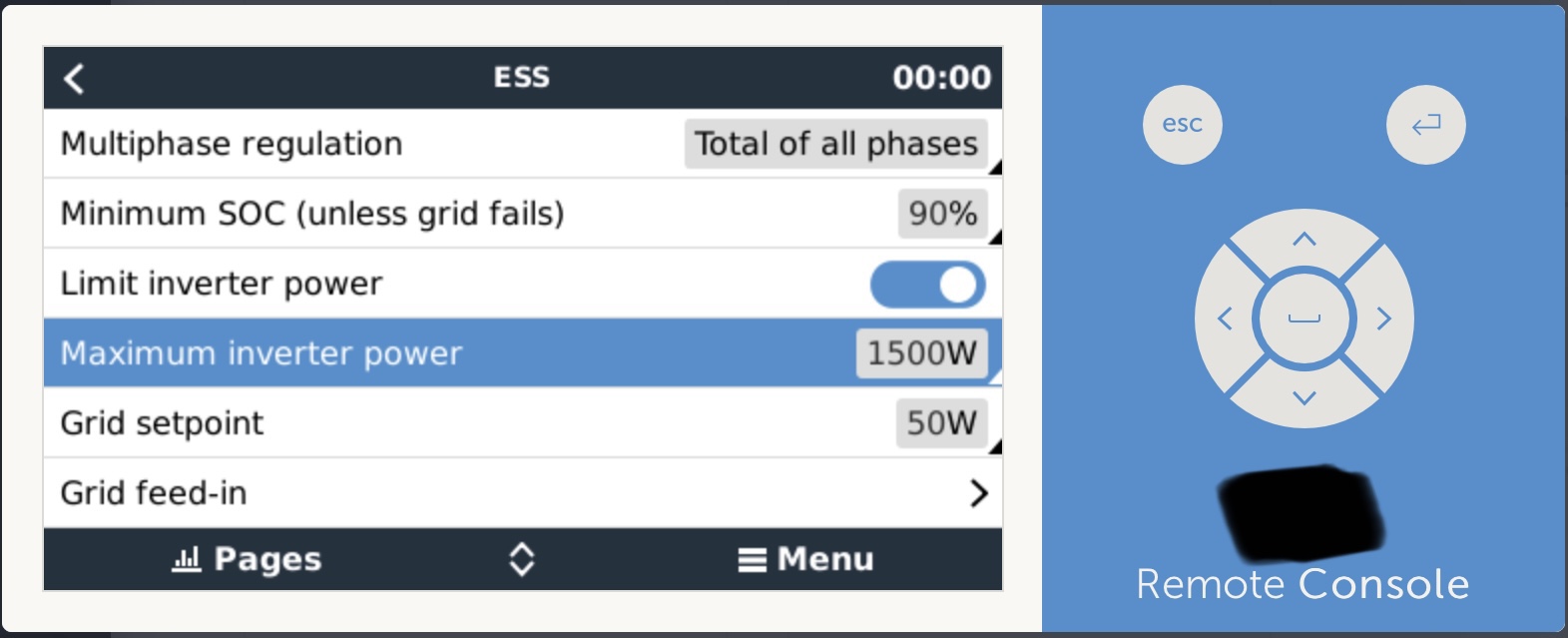Installation: 3-phase with 3 x MultiPlusII-48-5000-70, Cerbo GX, EM24, ET112, a grid-tied inverter connected to phase L1-ACout1, BYD LVS. All loads connected to L1-, L2-,L3-ACout1. The grid-tied inverter delivers 1,5 kW, 24/7, and is part of a fuel cell system. ESS assistant defined.
Targets: Use ESS to optimize self-consumption peak loads with average consumption appr. 9 - 10 MWh per year, self-generation 13 MWh per year, base load appr. 400 W. Don’t use grid for battery charging. Allow feed-in, if battery is full. Use stored energy to replace grid in case of LOM detection.
Background: Installation location Germany (highest energy price in Europe, peanuts only for feed-in), stable grid,
Commissioning:
EM24 for grid energy (not really necessary), ET112 defined as PV-inverter, separate bi-directional measurement (mode b)
Configuration:
VEConfig3: Load current 7 A (1,5 kW - 400 W = 1,1 kW available for charging; 3 x 7 A x 50 V= 1,1 kW), lithium battery, ESS assistant with LiFePo4 with other type BMS, battery capacity 16 kWh, recommended values for BYD LVS
Cerbo GX set up: BYD LV on CAN-bus, DVCC on, load current limit 20 A, phase compensation, minimum SOC 20 %, shown active limit 50 %, grid set point 1100 W (= 1,5 kW - 400), PV-inverter no set up.
Question:
There is a set up possible according to Cerbo GX manual for limit charge power from AC1. In fact the Cerbo GX set up (2.62) doesn’t offer it. How can I activate it?
It would be useful to have it particularly in Germany, see targets and background.
How can I further optimize self-consumption during peak loads, e.g. increase de-load current of battery, or other actions?
Remark:
The data shown by Cerbo GX console and in VRM portal don’t make sense to me.
Examples: The information about grid, loads, PV-inverter and battery isn’t really balanced apparently PV-power is missing, historical value to grid and production isn’t zero in fact (see attachments).
What can I do to correct?
But one fact is clearly displayed: The minimum effect by the current from the battery.

I would appreciate everybody’s support very much.


